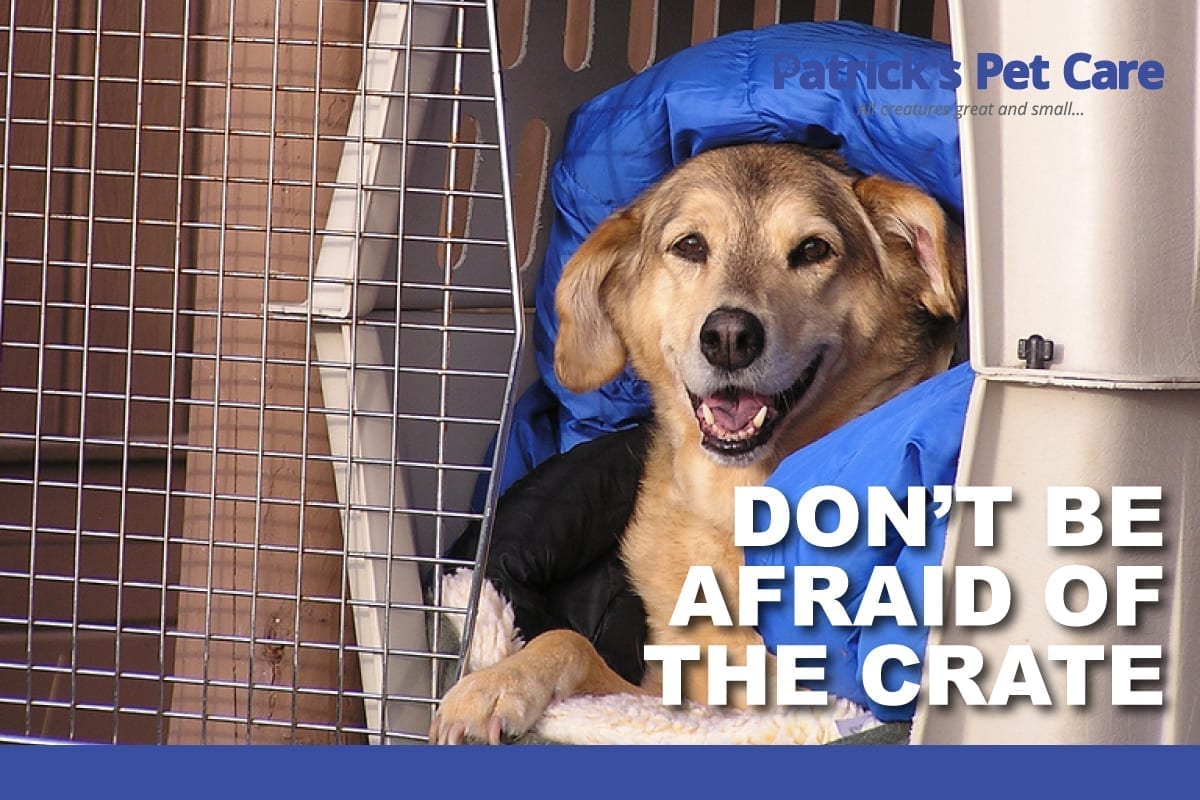
For some reason, some dog owners tend to think of crates negatively. They don’t see it as their dog’s sacred space or crate training as a tool. Instead, they see it as punishment or a bad thing.
At Patrick’s Pet Care, this might be the biggest misconception we hear. Here is why you should not be afraid of the crate, but rather embrace crate training.
Your Dog’s Space
Their crate is your dog’s special space. It is an area for them and for them only. It is where they can sleep, spend the day, and stay safe. When your dog knows that this is their space, they will spend time there. By keeping the crate door open during the day, they have the option to wander in and out and even take naps there. Outside of their bed, this is the only other space that is just theirs. And, yes you can put your dog in its crate when he or she is bad. Did your mom tell you to “go to your room” when you were a kid after you did something bad? When that happened did you forever associate your room as a dungeon or a bad place? Of course not. Neither do they.
Crate Training Essential
A crate training is an essential tool for puppies as well as older dogs. When potty training, it is important to keep your dog in the crate for a few hours so they learn to hold it. This is especially important for puppies as they learn how to go for longer periods of time without going to the bathroom. Dogs will not go to the bathroom in the same space they spend time in, so when you have the right size crate (not too big, not too small), they will not go in the crate. How big should a crate be? Great question! A crate is appropriately sized if your dog can:
- Turn around freely
- Easily stand, sit and stretch
- Stand up tall without hitting his head on the roof of the crate
- Move about and assume a comfortable posture for eating and drinking
- Hold his tail erect
Safe Way to Stay Home
Before your dog has free reign of the house while you are gone, start by keeping them in the crate and slowly introducing them to short spurts of time outside alone. When you leave your dog out while you are gone, without training it to be alone, it can get into lots of things you don’t want it to and take out its boredom on your shoes or remotes. You also don’t want them to get into anything dangerous or hurt themselves.
Newsletter Signup
Get fear-free, force-free enrichment and training tips, adorable dog stories, the latest canine science, and more—all straight to your inbox!
"*" indicates required fields

